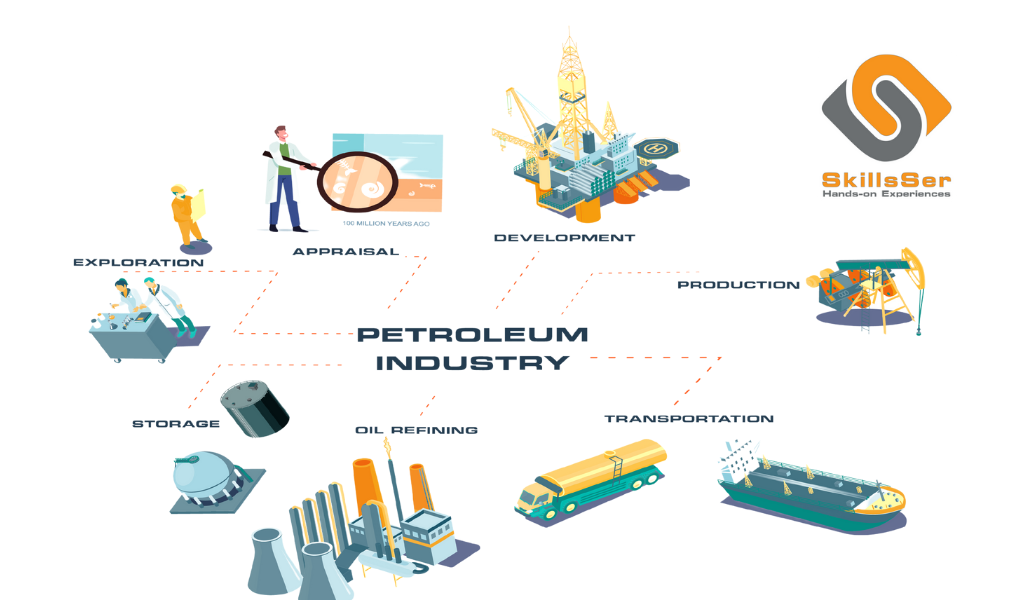The 5 stages upstream oil and gas life cycle

The oil and gas life cycle of upstream processing consists of five stages:
Exploration phase
Is about finding oil and gas fields. The main goal is to identify and deliver commercially viable field development opportunities.
The following geological and geophysical (G&G) activities would take place:
- Conduct seismic surveys.
- Process and interpret the seismic data and map the potential reservoir.
- Select exploration well locations.
- Drill and evaluate exploration well data.
- Core analysis to establish porosity and permeability.
- Logging data to determine porosity, water, and hydrocarbon saturation.
- Production test data to determine flow rates and maximum production potential.
- Build a computer model of the reservoir and identify and where possible remove major uncertainties by further data analysis, seismic reprocessing, etc.
Appraisal phase
The objective of Appraisal is to obtain information about the reservoir in order to make a decision whether or not to proceed with the development of the field.
This stage comprises the following activities:
- Reprocessing existing seismic data to obtain enhanced results.
- Drilling of appraisal wells.
- Evaluation of the results from the seismic and appraisal drilling activities.
- Using the information from the seismic and drilling programs to update the computer reservoir simulation models.
- Conduct initial conceptual field development planning and study of these conceptual plans.
Development phase
Now we’ve determined the size of the oil field, the geologists, geophysicists, and reservoir engineers must put their heads together and plan the location for the development wells.
The object, at this stage, is to get the maximum amount of oil out of the ground with the minimum number of wells.
Production phase

Is targeted at bringing the well fluids to the surface and preparing them for use in refinery or processing plants.
The main activities consist of the following:
- Regulate production and injection to meet approved plans for the quantity and quality of the product.
- Monitor and record all information to manage the reservoir, wells, and facilities.
- Plan and schedule all production and maintenance activities to minimize production operating costs.
Abandonment phase
The end of the life of the field is when it is no longer economic for the operator to continue production.
The major activities during the decommissioning phase are:
- Plug and abandon wells by putting cement plugs into the well and removing the well-head.
- Ensuring that there is no contamination of the environment from any oil or waste material remaining in the process facilities.
- Restore the site to its original condition.
Written by/ SkillsSer Editors Team


